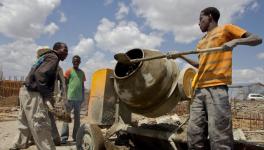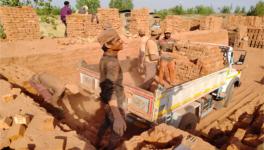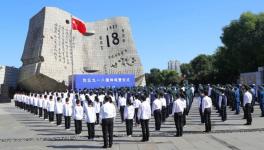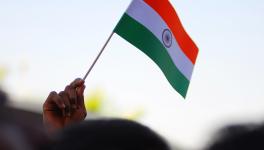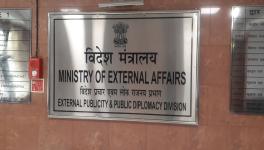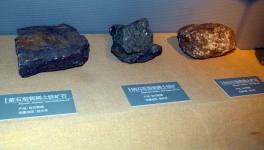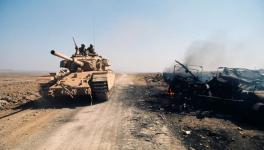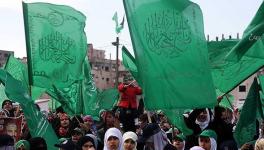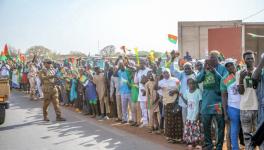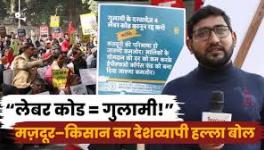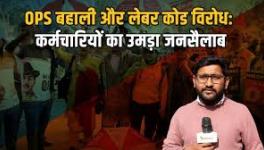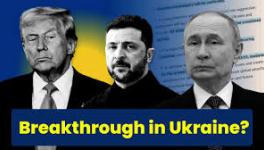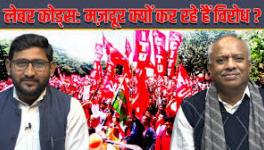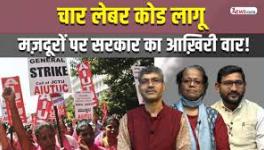The Guns Are Again Ablaze in Libya
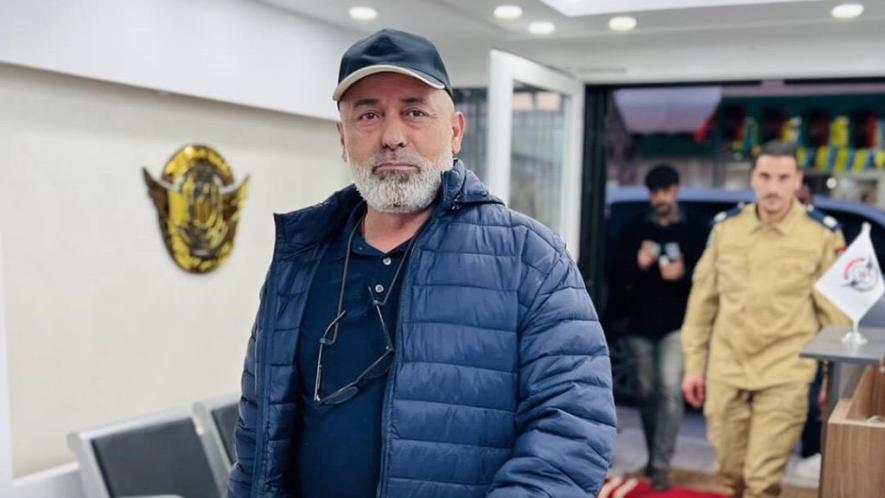
Commander of the Stability Support Authority, Abdel Ghani al-Kikli, also known as “Gheniwa”, was assassinated during a meeting at the base of the 444th Combat Brigade. Sparking massive clashes between government and paramilitary forces across Libya's capital. Photo: X
On May 12, 2025, Abdul Ghani al-Kikli, known to everyone in Libya as Ghnewa al-Kikli, was killed during a meeting inside a militia facility run by the 444th Combat Brigade in Tripoli. Ghnewa, as he was called, led the Stability Support Apparatus (SSA), which had ruled parts of Tripoli, and indeed sections of northern Libya, with an iron fist. The leader of the 444th Brigade, Major General Mahmoud Hamza, celebrated his troops for “overthrowing the Ghnewa Empire”. Hamza, although rooted in his militia, is the director of military intelligence of one of the several governments that claim to be the official government of Libya. The death of Ghnewa opened a new round of violence across Tripoli, as the SSA fighters took to the streets in distress at the death of their leader. As the SSA dissolved in despair, the 444th Brigade went into its vacated posts and properties to claim them. At this point, as if Libya needed more trouble, the RADA Special Deterrence Forces, led by the Islamist leader Abdul Raouf Kara, attacked the 444th Brigade. Kara’s al-Radaa or RADA forces are rooted in the Madkhali salafi tradition that is favored by sections of Libya’s Muslim Brotherhood, and while the name of their force appears governmental, it is just another glorified militia outfit that spends its time going after non-Islamic political forces in Libya.
The clash between the 444th Brigade and the SSA, and then with the RADA Special Deterrence Forces, provoked another round of handwringing about tribalism and Islam in Libya. That was how the Western press and think tanks reported what had happened in Tripoli. But this is utterly misleading. Major General Hamza responded to criticism that his 444th Brigade operates as a militia for parochial purposes on his Facebook page: “For years, we have always been keen on the security and protection of citizens, preventing bloodshed and stopping the armed conflict. We were not advocates of war, and keen on the sanctity of the blood of innocent people and the protection of lives, property and honors. Our intervention in the past years to stop armed conflicts is evidence of the sincerity of our intentions.” He hastened to meet with the Prime Minister of Libya’s Government of National Unity, Abdul Rahman al-Dbeibeh and told him that the 444th Brigade had secured the major intersections in Tripoli, such as at Salahaldeen and Ain Zara. All seemed back to normal.
What NATO created
When the North Atlantic Treaty Organization (NATO) exceeded the mandate of United Nations Security Council resolution 1973 in 2011, it did not provide a no-fly zone or prevent bloodshed in Libya, but it destroyed the institutions of the Libyan state and provided air cover to various militia groups. These militia groups, funded by a range of actors (Egypt, United Arab Emirates, Saudi Arabia, Qatar, Turkey, the United States), worked together against the remnants of the Libyan state, but had nothing to unite them. The moment that they brutally killed Muammar al-Qaddafi and claimed Tripoli, they turned on each other. A hasty parliamentary election called for 2012 brought some of these factions into stark conflict: the Muslim Brotherhood coalesced by and large around the Justice and Construction Party (led by a former hotel manager, Mohamed Sowan) and the National Front for the Salvation of Libya (led by a long-time exile, Mohamed el-Magariaf), the salafi Homeland Party (led by the cleric Ali al-Sallabi and the al-Qaeda fighter Abdelhakim Belhadj), and then the neoliberals of the National Forces Alliance (led by the US-backed Mahmoud Jibril). The pro-Qaddafi forces had been banned. No political leader emerged in parliament with a majority, while Islamist and other militias began to tear apart the country as the state’s monopoly over armed force vanished. Prime Minister after Prime Minister followed each other, but none had real power. The entire situation created by NATO in 2011 exploded into what is now known as the Second Civil War, which went on from 2014 to 2020.
Three centers of power emerged. The Government of National Unity and the Government of National Salvation operate in Tripoli, while the Government of National Stability is in Tobruk and Bayda. Guns blared with ex-CIA asset General Khalifa Haftar trying on several occasions to seize Tripoli from the east and provide a military solution to the political disorder. But no one was able to prevail. Libya became chaotic, the oil wells clogged up, theft was rampant, and government institutions deteriorated. None of the major political forces could make a claim to being Libyan, with the result that no-one could rise above their parochial origins (leaders of this or that militia from this or that town) or of their limited power base (head of this group or that group with gunmen able to defend this or that neighborhood or town). In the absence of any national force (a military or a political project), Libya spent the past decade bathed in violence and despair.
Ghnewa was a perfect example of the kind of man who dominated Libya. He was born in Benghazi, but his family comes from Kikla, a town in the western Nefusa Mountains, about 150 kilometres southwest of Tripoli (where his body was returned to be buried on May 14). Ghnewa owned and worked in a bakery in Tripoli’s Abu Salim working-class district in 2011 when Gaddafi was overthrown. He had already become part of the local muscle in the tough neighborhood, and shaped that experience into building a militia that increasingly took over parts of the economy and life of Tripoli. It was the SSA that ran many of the prisons in which migrants had been detained, tortured, and then sold into enslavement (recently the International Criminal Court framed a warrant for the arrest of Osama Elmasry Njeem, the head of one of these prisons; rather than hand him over, the Italian government, which had Njeem in custody, sent him back to Libya). While it is tempting to imagine that his death is part of an attempt to clean up the militia groups, it is in fact part of a broader internal struggle between the militias that characterized the Second Libyan Civil War. Social media shows the movement of militia groups from Warsehfana and Zawiya in western Libya toward Tripoli, perhaps in support of Kara’s RADA group. There is no immediate optimism about the situation in the aftermath of Ghnewa’s death. The baker lived by the gun and died by the gun. His life since the NATO war has been characterized by violence and corruption – dangerous ingredients that characterize Libya today.
Dangerous tremors
A few days after the death of Ghnewa, Libya’s mufti, Sheikh Sadiq al-Ghariani went on Tanasuh Television to call for “people to take to the streets in their tens of thousands to call for elections and an end to the transitional phases”. Al-Gharani, a salafi preacher, had emerged in the chaos of the NATO war to claim this important seat and from there began to offer fatwas against Qaddafi and later against anyone who went against his view of the world. He remains very powerful, with close links to some of the Islamist forces in the country. Meanwhile, General Khalifa Haftar took advantage of the anniversary of what is called the al-Karama (Dignity) uprising of 2014 to offer his view that the military is the most important institution in Libya and should be saluted for its bravery and commitment to the nation. Between al-Ghariani and Haftar lie the two sources of power within the country, those who wield the Quran and the Gun, for political purposes. Even they are fragmented, though.
But the real source of power lies elsewhere. Since 2011, the United Nations has forty-four times passed resolutions calling for stability in Libya and for no outside interference. The ceasefire of 2020, rooted in the Berlin II process, created several platforms for stability and sovereignty, including the Security Working Group, the Economic Working Group, and the 5+5 Joint Military Commission. These groups have become vehicles for the intervention of foreign powers, from the United States to Turkey, that are interested in Libya’s future oil production. They simply will not allow Libya to breathe because that will mean that it might make decisions for the oil that do not please the outside forces. In each of these groups and the many others that have been set up since 2012, Libyan representation has been minimal, largely because Libya is itself fragmented and disoriented.
The guns are again firing in Libya. Money pours in from outside with the hope that one day Libyan oil will allow money to move in the opposite direction. In the shifting sands of Libya’s interior, hope is minimal. The desire is for no more conflict, but that is unlikely. There are so many men with guns across the country. And they have so many bullets.
Vijay Prashad is an Indian historian, editor, and journalist. He is a writing fellow and chief correspondent at Globetrotter. He is an editor of LeftWord Books and the director of Tricontinental: Institute for Social Research. He has written more than 20 books, including The Darker Nations and The Poorer Nations. His latest books are On Cuba: Reflections on 70 Years of Revolution and Struggle (with Noam Chomsky), Struggle Makes Us Human: Learning from Movements for Socialism, and (also with Noam Chomsky) The Withdrawal: Iraq, Libya, Afghanistan, and the Fragility of US Power.
This article was produced by Globetrotter and No Cold War.
Courtesy: Peoples Dispatch
Get the latest reports & analysis with people's perspective on Protests, movements & deep analytical videos, discussions of the current affairs in your Telegram app. Subscribe to NewsClick's Telegram channel & get Real-Time updates on stories, as they get published on our website.









